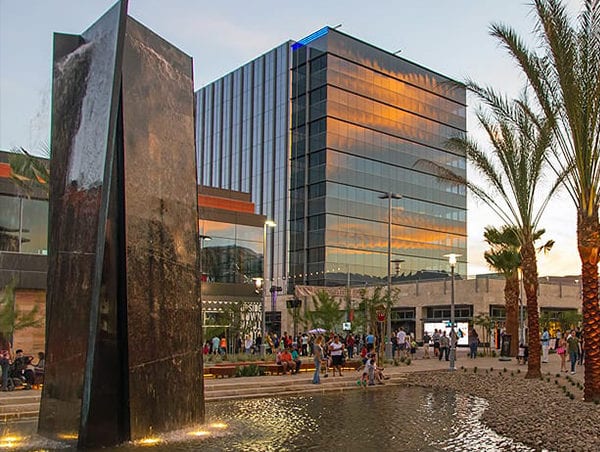New Urbanism and Water Features
Posted in Insights -

Today’s designers, developers, architects, and planners are taking city planning to a whole new level.
As live/work/play environments continue to emerge in markets throughout the U.S., city-based revitalization projects are on the rise, based in large part on the new urbanism movement.
This urban planning effort, which first emerged in the 1980s and is now being seen throughout the country, focuses on creating livable, walkable neighborhoods with dense, easy access to jobs, housing, and commercial property offerings.
New urbanism has grown so strong that walkable neighborhoods are now emerging in suburban areas, partly due to a rising environmental consciousness that promotes more efficient use of resources in the built environment of sprawling suburbs.
These “surban” areas feel like cities, with great workplaces, retail, dining, and entertainment options all within walking distance of housing and jobs.
Because developable land is more readily found in suburbs than in cities, many of these “surban” areas have embraced new urbanism and are developing entertainment districts that feature a mix of retail, hotel, restaurant, and sports venues in close proximity to housing – all designed to attract local residents and tourists and to enrich the area’s business community.
As these central city-like developments continue to emerge, many city leaders and developers are asking: What role does a water feature play in the new urbanism movement?
The answer is threefold:
1) Water features attract crowds
At a basic psychological level, humans are attracted to water.
Consequently, water features offer a breadth of benefits to cities and entertainment districts by drawing people closer to these shopping, dining, and entertainment establishments, encouraging increased length of stay at local businesses and providing social media-worthy photo opportunities that spread interest in the area and foster tourism.
2) Water features integrate art and entertainment
Research shows that public art has a tremendous impact on health and happiness. Art connects people to places, slows them down for a moment of rest, and evokes positive emotions that leave a lasting impression.
OTL’s artisans regularly integrate art into the fountains we design and construct, giving the public a structure that inspires and moves them, while in many cases, helping developers and cities to fulfill requirements for public art installations.
At the re-envisioned Hillsdale Shopping Center development in San Mateo, California, for example, OTL designed and constructed a unique fountain that has become part of the City of San Mateo’s Art in Public Places.
Projects like these help to contain costs for developers, while also delivering beautiful public art to cities nationwide.
3) Water features serve as a hub for placemaking
City officials and developers are constantly seeking ways to improve the lives of their constituents, and water features are an excellent strategy. For cities and entertainment districts, water features provide a focal point, a landmark, a gateway, and a gathering spot. They attract residents and visitors to congregate, relax, and be entertained time and time again.
Perhaps most importantly, water features bring a touch of nature to the built environment, a bit of relief from brick, mortar, and concrete. They provide a respite from the hustle and bustle that seems inherent in the built environment, and they serve as a pièce de résistance that draws people in and allows them to return to the walkable environments they love with renewed passion and energy.
As developers, planners, and city officials continue to integrate new urbanism into cities and suburbs alike, water features will play an increasingly important role in placemaking, public art, and the attraction of residents and guests to destinations throughout the nation.